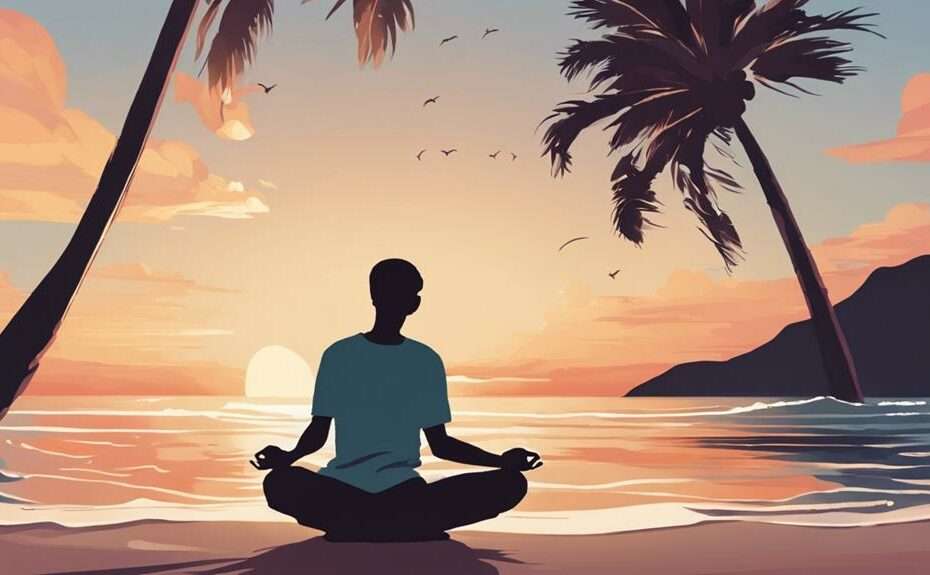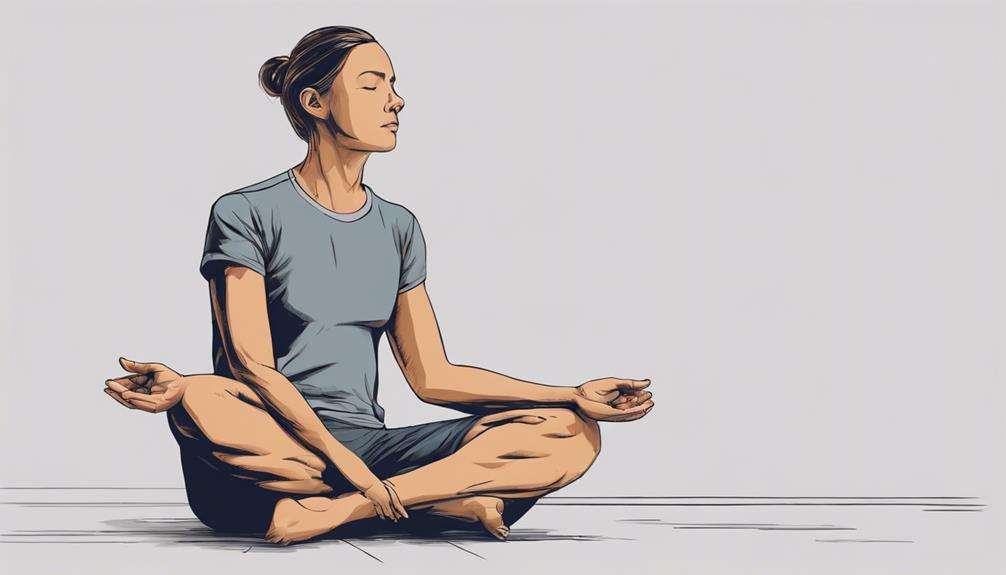As you close your eyes and envision a serene beach at sunset, the gentle rhythm of the waves invites you to take a deep breath in, filling your lungs with the salty air.
The art of deep breathing holds a key to releasing a state of ultimate relaxation, but how exactly can you master this technique to achieve a sense of bliss and tranquility in your daily life?
Explore the world of deep breathing practices and discover how they can transform your well-being, starting from within.
Key Takeaways
- Activate parasympathetic nervous system for deep relaxation
- Enhance mindfulness and focus through breath awareness
- Experience calmness and stress relief with rhythmic breathing
- Cultivate inner peace and emotional balance with visualization techniques
Benefits of Deep Breathing Techniques
Deep breathing techniques offer a multitude of benefits that encompass physical, mental, and emotional well-being. When it comes to stress, incorporating these techniques into your daily routine can be a game-changer. By activating the parasympathetic nervous system, deep breathing promotes relaxation and helps reduce stress levels greatly. Not only does it lower blood pressure and decrease heart rate, but it also contributes to an overall sense of well-being.
Engaging in deep breathing exercises regularly can aid in anxiety relief, promote mental healing, and enhance emotional stability. The impact goes beyond just relaxation; it can improve your focus, concentration, and even the quality of your sleep. By making deep breathing a part of your relaxation routine, you can also boost your immune system and experience a profound sense of tranquility. Prioritizing these techniques in your daily life can lead to a calmer, more balanced you.
Importance of Breath Awareness
Breath awareness plays an important role in managing stress and promoting relaxation, offering a pathway to inner peace and emotional balance. When you focus on your breathing, you engage in a powerful practice that can transform your state of mind.
Here are three key reasons why breath awareness is vital in your journey towards relaxation:
- Regulating Emotions: By paying attention to your breath, you can effectively regulate your emotions, bringing a sense of calm and stability to your mind.
- Activating Relaxation Response: Deep breathing techniques activate the body's relaxation response, helping you achieve a state of ultimate relaxation and tranquility.
- Enhancing Mindfulness: Regular practice of breath awareness enhances mindfulness, allowing you to be fully present in the moment and cultivate a sense of inner peace.
The 4-7-8 Breathing Method
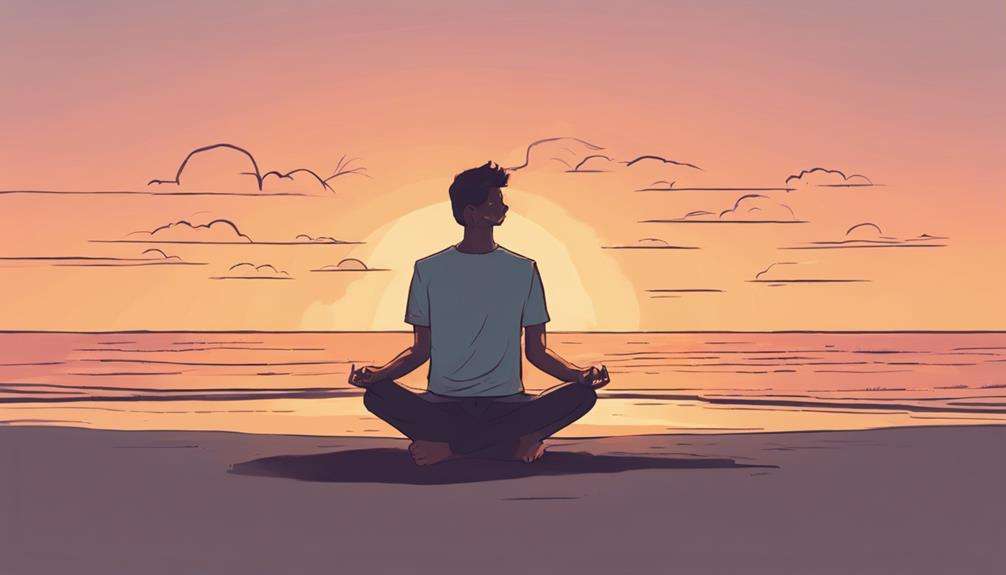
When practicing the 4-7-8 breathing method, you inhale for 4 counts, hold for 7, and exhale for 8.
This technique, created by Dr. Andrew Weil, aims to induce relaxation and calmness naturally.
Slow, Rhythmic Breaths
Utilize the 4-7-8 breathing method to achieve a state of deep relaxation and calmness by following the precise inhale-hold-exhale pattern. This technique, developed by Dr. Andrew Weil, is a powerful tool for promoting relaxation and reducing stress.
Here are some reasons why slow, rhythmic breaths with the 4-7-8 method can benefit you:
- Enhanced Relaxation: The 4-7-8 pattern activates the body's relaxation response, leading to deep relaxation and peace.
- Stress Relief: Slowing down your breathing with this method helps soothe the mind and body, reducing stress levels.
- Improved Well-being: Regular practice of the 4-7-8 breathing technique can result in enhanced relaxation and overall stress relief, contributing to better well-being.
Calms Mind and Body
To achieve a profound sense of relaxation and calmness, consider embracing the 4-7-8 breathing method for its ability to soothe both your mind and body deeply.
This technique is designed to reduce stress by engaging the parasympathetic nervous system, promoting a deep state of relaxation. By following the pattern of inhaling for 4 counts, holding for 7 counts, and exhaling for 8 counts, you can activate the body's relaxation response effectively.
This method helps counteract the body's stress response by extending the exhale and breath retention. Regular practice of the 4-7-8 technique can enhance stress management and contribute to overall well-being.
Incorporating this breathing method into your relaxation routine can lead to ultimate relaxation bliss for your mind and body.
Promotes Relaxation Deeply
For a deeply calming and restorative experience, consider incorporating the 4-7-8 breathing method developed by Dr. Andrew Weil into your relaxation practice. This breathing exercise involves inhaling for 4 counts, holding for 7 counts, and exhaling for 8 counts, promoting deep relaxation through diaphragmatic breathing.
Here are three reasons why the 4-7-8 method is beneficial for your overall well-being:
- Activates the body's relaxation response
- Stimulates the parasympathetic nervous system
- Reduces stress and promotes overall well-being
Exploring Box Breathing
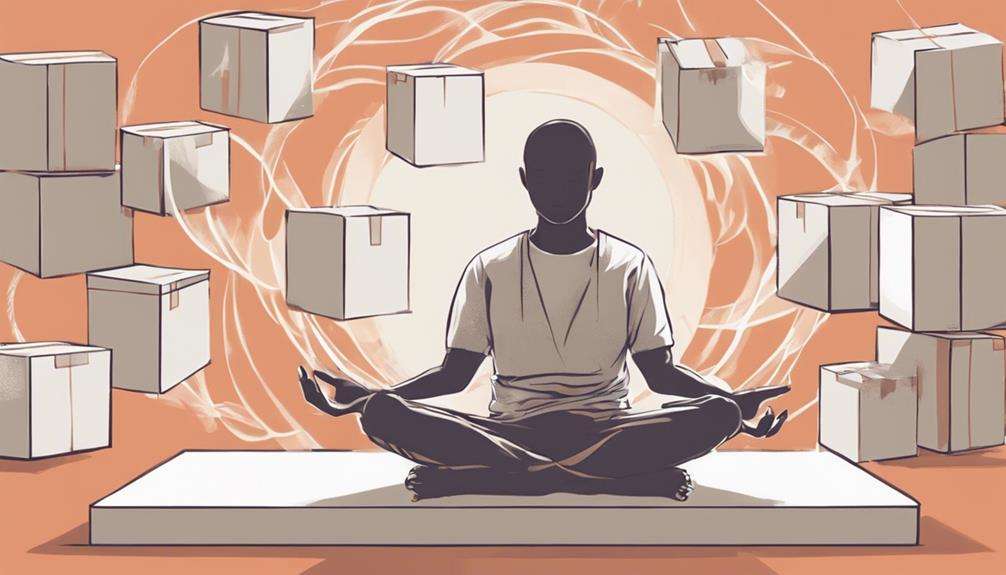
Box breathing, a simple yet powerful technique, involves a specific pattern of breathing to promote calmness and relaxation.
This method consists of inhaling deeply for a count of four, holding the breath for another four counts, exhaling for four counts, and once again holding for four counts before repeating the cycle.
Not only is box breathing an effective tool for stress management, but it's also favored by Navy SEALs to enhance focus and composure in high-pressure situations.
Paced Breathing for Relaxation
When seeking relaxation and stress reduction, exploring paced breathing can be a beneficial technique to synchronize your breath with a chosen rhythm or music. Mindful Breathing is a key component of paced breathing, allowing you to focus on the present moment and calm your mind.
This technique offers various techniques for stress management, providing you with tools to navigate challenging situations with a sense of guarantee. By engaging in paced breathing, you can promote overall well-being by regulating your breath patterns and inducing a state of tranquility.
Additionally, practicing paced breathing regularly can help cultivate inner peace and enhance your ability to manage stress effectively. Customizing your paced breathing experience to suit your preferences guarantees that you can create a personalized relaxation method that resonates with you.
Give paced breathing a try to experience the profound benefits it can bring to your mind and body.
Progressive Muscle Relaxation

Progressive Muscle Relaxation can be a beneficial tool in managing chronic pain, insomnia, and various medical conditions. By incorporating this practice into your routine, you can enhance your mind-body awareness and activate your body's relaxation response, ultimately promoting a healthier and more relaxed state of being.
Additionally, Progressive Muscle Relaxation cultivates profound relaxation through the deliberate tension and release of various muscle groups, fostering a deep sense of calmness and well-being. By engaging in this practice, you can enhance your relaxation experience by systematically reducing muscle tension throughout your body. This technique works by tensing specific muscle groups for a few seconds and then releasing the tension, allowing you to experience a deep state of relaxation.
As you continue with Progressive Muscle Relaxation, you'll notice a significant reduction in overall muscle tension and stress levels. By focusing on each muscle group individually, you promote deep relaxation throughout your body, leading to a sense of tranquility and peace within yourself. This method isn't only effective in lowering anxiety but also in improving your overall well-being.
Visualization for Stress Relief
To further enhance your relaxation practice and manage stress effectively, consider incorporating visualization techniques that involve imagining peaceful scenes or calming environments. Visualization is a powerful tool that can help calm your mind, reduce stress levels, and promote overall well-being.
Here are three key benefits of using visualization for stress relief:
- Enhanced Mindfulness: Visualization encourages you to focus on the present moment, promoting mindfulness meditation and helping you let go of worries about the past or future.
- Deep Breathing Support: When combined with deep breathing techniques, visualization can deepen your relaxation experience, allowing you to release tension and stress more effectively.
- Positive Outcome Visualization: By visualizing positive outcomes or scenarios, you can alleviate anxiety, cultivate a sense of calmness, and boost your overall emotional balance.
Incorporating visualization into your daily relaxation routine can have long-lasting benefits for managing stress and promoting a sense of inner peace.
Yoga Breathing Practices
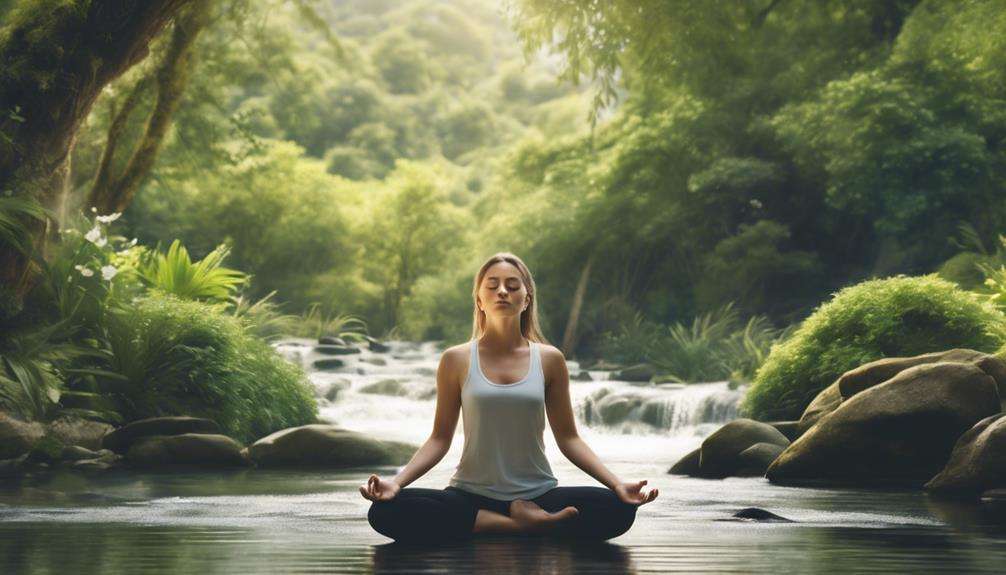
Yoga breathing practices, also known as pranayama, offer a holistic approach to enhancing relaxation and fostering overall well-being through breath control techniques. The rhythm of your breath is at the core of pranayama techniques, such as ujjayi breath, kapalabhati, and nadi shodhana, all aimed at improving emotional well-being.
Ujjayi breath, resembling the sound of ocean waves, involves deep nasal breathing, inducing a calming effect that eases the mind and body. Kapalabhati, on the other hand, focuses on forceful exhalations followed by passive inhalations, rejuvenating the body and bringing mental tranquility. Nadi shodhana, or alternate nostril breathing, harmonizes the brain's hemispheres, enhancing a sense of peace and mental clarity.
Frequently Asked Questions
How to Do Bliss Breath?
To do bliss breath, inhale deeply through your nose, pause briefly, then exhale slowly through your mouth. This yoga practice enhances meditation benefits, reduces stress, and promotes relaxation. Incorporate this technique into your stress relief techniques for ultimate relaxation bliss.
What Are the 5 Deep Breathing Relaxation Steps?
To achieve stress relief and enhance your meditation practice, focus on the mind-body connection through deep breathing. Find a quiet spot, get comfortable, close your eyes, place hands on chest and abdomen, then breathe deeply and slowly for ultimate relaxation bliss.
What Is the 4 7 8 Breathing Technique For?
You can harness the power of the 4-7-8 breathing technique for ultimate relaxation. Inhale for 4 counts, hold for 7, and exhale for 8. This method activates your body's relaxation response, providing deep relaxation and stress relief.
What Breathing Techniques Do Navy Seals Use?
To enhance combat readiness, stress management, and mental toughness, Navy SEALs rely on box breathing. Inhale, hold, exhale, hold – each for 4 seconds. This technique regulates the nervous system, reduces stress levels, and boosts performance.
Conclusion
As you continue to explore deep breathing techniques for relaxation, remember this: practicing just 10 minutes of deep breathing daily can reduce stress and anxiety by up to 44%.
By incorporating these techniques into your routine, you're taking a proactive step towards improving your overall well-being.
So take a deep breath, relax, and let the power of your breath guide you to ultimate relaxation bliss. You deserve it.
